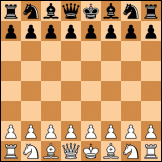Hello again:
Daniel Shawul wrote:Well in that case it is even more. I used a cubic trend line from excel at first which showed >20000 even at shallow depths which I assumed maximum depth to be at 80 half plies. That is the average plies in a game of chess. But with logarithmic fit, you are right it is much less. I don't know if cubic is overfitting the data as R2=1. Logarithmic has 0.9999 and yet the results are a lot different. That is why you need to test at bigger depths to say anything definitive about significant diminishing returns. Try a cubic on the data, and you will get >20000 at depth=70 while fitting the data better.
I am not very gifted at maths, but I think you hit the spot: the overfitting issue.
Daniel Shawul wrote:Using logarithmic fit we are _forcing_ it to decrease. The slope in the previous model is dy/dx=1037/x so you will have 1elo per ply at depth 1037. So in a way, we use logarithmic because we want to see diminishing returns! If you do neutral model selection from linear,polynomical,logarithmic and other models,you are very far from proving diminishing returns with the data you are given. It is just too small a data, and infact towards the last ply didn't show any diminshing. So it is more about our assumption, than logical conclusion from what we observed.
Yes, I am forcing it to decrease because it is what I expect to see. Obviously, deeper depths and a insane number of games are required. Quoting myself:
Ajedrecista wrote:I choose a line because of some reasons: when depth d tends to infinity, then ln(d) ~ 1 + 1/2 + 1/3 + ... + 1/d and ln(d - 1) ~ 1 + 1/2 + 1/3 + ... + 1/(d - 1); delta_x = ln(d) - ln(d - 1) = ln[d/(d - 1)] ~ 1/d. If Y(x) = mx + n, dY/dx = m; estimate Elo gain = delta_Y = m*delta_x ~ m/d ---> 0 if d ---> infinity (diminishing return exists with this model).
A quadratic function fails with the same previous analysis: Y(x) = ax² + bx + c; dY/dx = 2ax + b; delta_x ~ 1/d (the same as before); estimate Elo gain = delta_Y = (dY/dx)*delta_x = (2ax + b)/d ~ {2a*[d + (d - 1)]/2 + b}/d ~ 2a = constant: diminishing return does not exist with this model (the same with other polynomials of higher degree). In dY/dx, I choose the average mean x ~ [d + (d - 1)]/2 because it makes sense to me. I am not taking into account error bars.
I choose the logarithmic approach with the aim of seeing a decrease in Elo gain. I agree that it can be a little cheat, but I also think that we have to be a little flexible with R² once it is near to one (I mean, not interpreting the adjust of R² ~ 1 as infinitely better to the adjust with R² ~ 0.9999 or R² ~ 0.999). But I know that fitting few data points for extrapolate far points is a very hard and risky task, always full of traps. I humbly present my model as reasonably good but not definitive or universally correct. Of course, everyone can apply his/her own fitting model and extract his/her own conclusions. Polynomial and logarithmic fits are too different. I have not checked it, but I am sure that if you try a polynomial of degree 6 in Excel you will see weird results for far points while R² ~ 1: IMHO, it is overfitting.
Daniel Shawul wrote:So in a way, we use logarithmic because we want to see diminishing returns!
...
So it is more about our assumption, than logical conclusion from what we observed.
You could not be more right! I fully agree with you. I can not say more than I have said until now: each person must do his/her fitting like he/she thinks it is best. Thanks for sharing your results.
Regards from Spain.
Ajedrecista.

